Vic Jones (TVW 1960-1966, 1983-1995, 2006 ‘till now) reflects on the early days of Audio.
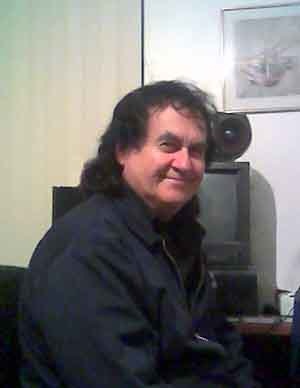
Vic Jones remembers back when things were a “bit different”.
People say how great things were back in the 60’s…I say how great things are now.
In those early days basically “good sound” was when you could make out what was being said and “bad sound” was when you couldn’t…a bit of truth, but wasn’t good enough in my opinion.
With the advent of stereo, 5.1 surround-sound, and home theaters, this has all changed and audiences now have much greater expectations. But getting to this point has been one “heck of a ride”.
I started my career in Television in the “front office” as a Junior Clerk six months after the start of TVW7.
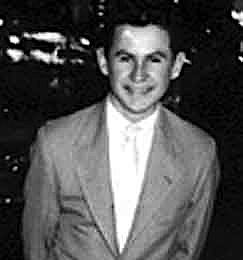
Vic Jones – 1960 TVW7 Junior Clerk
Not happy with boring paper work and eighteen months later after completing some (minimal) studies, transferred out of the “front office” to the Engineering Dept as a Junior Technician…then into Audio as an Operator (part of Engineering in those days) where I stayed until 1966.
Later I returned in 1983 and stayed on as an Audio Director until 1995. I returned again in 2006 after working in television in Jakarta as an Audio Dept Manager for Yasawira Tama Cipta and in Malaysia as General Manager for HVD. Now back again with TVW as a casual Audio Director on weekend news. (and loving it).
The pinnacle of my operational career was being selected as an Audio Director for the Seven Network 1992 Olympic Games in Barcelona.
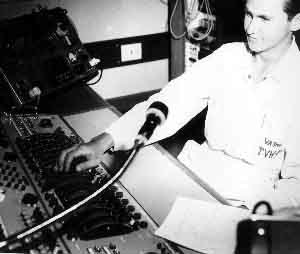
Vic Jones AMU2 1962
I’ve seen huge changes in the TV industry over the years, including here in Perth, the eastern states (Ch 2, 7 & 10) and overseas. It’s now nothing like it used to be.
So much equipment used in those early years has all passed us by. Turntables died (although on a novelty comeback), ¼“mono Reel-to-Reel tape recording died, EMT plate died…and in recent years (which would have been great to have in the 60’s) Multi-Track tape recording died, Audio Cassette died, DAT was dead on arrival, endless loop Cartridge machines died, VHS & Betamax died, 8mm is almost dead, Laser Disc died, and the list goes on.
Even some of the consumer equipment that has been phased out over the years was better than some of the commercial equipment we used back in the early 60’s. Sometimes it was just a matter of waiting for inventions.
I was given a 2” Video tape of on air recordings of my band performances on Club 7 Teen back in 1966 as I was leaving TVW for the first time and was told by Gerard Swift (TD) “keep that tape Vic…some day someone may invent some consumer equipment that you can have it transferred to”. Eventually that happened in the mid 70’s, when I was able to get it dubbed to VHS.
Television was perceived in those early days as “radio with pictures,” and the industry’s structure was modeled on those of Radio.
Performers, Technicians and Executives were drawn from Radio where possible, but a number of Executives came from the Newspaper industry with little or no knowledge of Radio, let alone Television.
It was exciting but tough pioneering times for everybody back then and many an argument was based upon “hearsay” on the way things should be done. (no body really knew)
The Audio Dept was always reminded that it’s “just radio with pictures” and “audio was not very important” in the Television industry, which caused no end of frustrations. Yes we had to have sound but “not too much time and money would be spent on it” we were always told…”pictures is what it’s all about now”
That thinking has changed dramatically over the years. Audio has finally caught up and now in an equal partnership with Video, but it took a long time. We had very little in the way of good audio equipment back then and very limited skills.
Radio microphones were non existent …where would we be now without radio microphones?
In those days you had to be a Technician or Electrician to be an Audio Operator and Alex Stewart, Colin Gory and George Baker were the originals. Alex I believe came out of Radio, so had some audio (technical) experience, but Colin and George were Electricians with no audio experience. They were all involved in wiring up Studio 2 AMU and having no one to train them were ‘self trained” as such in the operational aspect.
I had the good fortune of having them train me as I had been there in the Accounts Dept for 18 months before transferring into Audio where they have had time to “master their craft”.
I really looked up to these guys, these guys were my heroes, but with due respect to Colin, George and Alex, it was a little like the blind leading the blind as nobody had taught them in Television. There were no Schools of Audio Engineering as we now have.
. 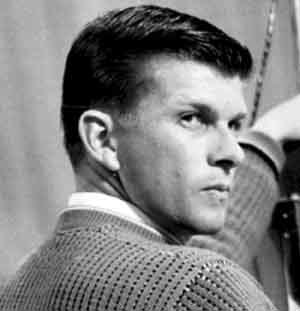
Colin Gory – approx 1961 Photo courtesy Gordon “Pockets” McColl (edited)
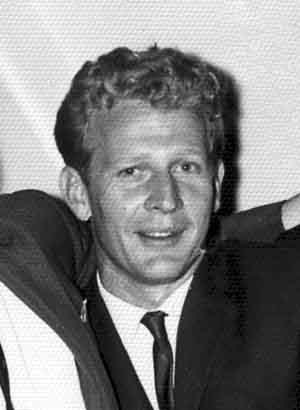
George Baker 1963
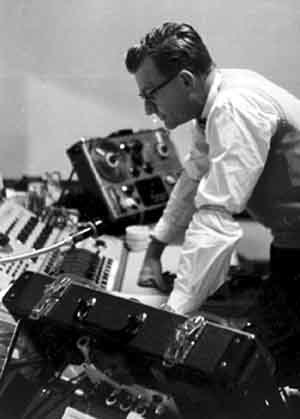
Alex Stewart – AMU2 – Photo courtesy Gordon “Pockets” McColl
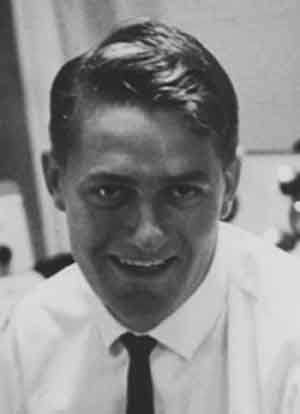
Lindsay Smith approx 1962 – Photo courtesy Gordon “Pockets” McColl (edited)
Lindsay Smith (an Electrician) and I started about the same time in Audio and we would “bounce” ideas off each other in an attempt to learn new skills.
Terry Green started a few months before I left in 1966 as my replacement and as he came from Sydney TV with Operator experience he was treated by me as a Guru and I learnt a lot from him. The east were so much more advanced in audio than TVW back then, as I found out when I joined TEN10 in Sydney.
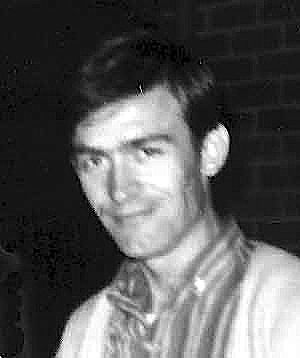
Terry Green – Audio “Guru”
The first Audio Control Room (AMU2) which was used for “On Air” Co-ordination and Studio Control had a PYE audio mixer which was very basic.
The room acoustics weren’t so good, but much better than the later built AMU1. The walls were parallel and just pegboard, or glass and the floor was hard. What did break up the “flutter” echo’s was the fact that the rack of equipment was directly behind the operator.
The room wasn’t very sound proof which became a problem when recording loud Rock & Roll bands in the Studio. At times I didn’t know whether the sound was through the walls or from the single monitoring loudspeaker, which made it hard to get a balance.
But recordings done in this control room always sounded better than AMU1 because you could (mostly) hear what you were doing due to better room acoustics.
Colin Gory did a great job of Rolf Harris’s “Tie Me Kangaroo Down Sport” considering the lack of equipment he had to work with.
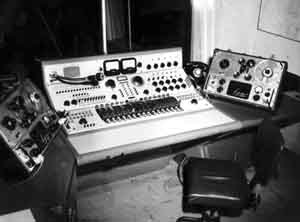
AMU 2 1962
We had no parametric EQ and the best way to EQ a microphone was to move it closer or further away from the talent or instrument or change the type of microphone. If the sound was too “bassy” then the microphone would be moved further away relying on the “proximity” effect of the microphone to solve the problem, but this would then create other problems such as pickup spill from other instruments or added studio noise.
No compression or limiters in those days and in the early stages, no reverb effects, just tape feedback and no fold-back for the artist if working with a band.
The faders had to be dismantled each day prior to going to air and oiled. This was to avoid “scratchy” sounds going to air as the faders were moved.
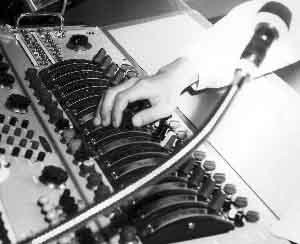
The PYE Mixer Faders
The Audio Control Room was side on to the VMU overlooking Studio 2, about where AMU5 VO Booth is now… where the current news Journo’s do most of their VO recordings.
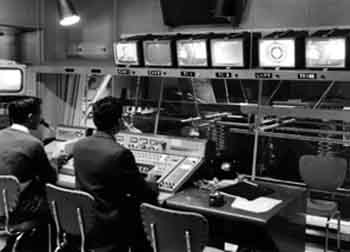
Studio 2 VMU
Studio 2 VMU was used not just for studio control, but also live “on air’ co-ordination.
The audio equipment rack was full of valve operated amplifiers which gave no end of trouble. They would make a frying sound as the valves started to fail. The valves would always wait until I was on air to “die” and the problem then was to work out which amplifier was the trouble maker and change it over without loosing too much on air audio.
At the rear of the AMU2 control was a Voice Over Booth or an Announce Booth as we called it. The Booth microphone (RCA 77 DX ribbon microphone) was always through an open fader on the audio desk, but it had a switch for ON/OFF in the Booth so they could switch their microphone on themselves at the appropriate time (when they remembered).
A lot of commercials and promo’s were done live to air from the Announce Booth.
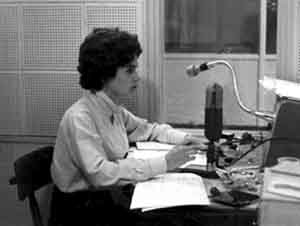
Pam Leuba in the Announce Booth.
The control room had two Beyer 77 mono tape machines, one on each side of the mixer making it hard to operate for jobs requiring dubbing machine to machine, but the layout looked good (symmetrical within the room) from an engineers perspective and I was told that’s important. Things just had to look good…it didn’t matter if it didn’t do the job properly.
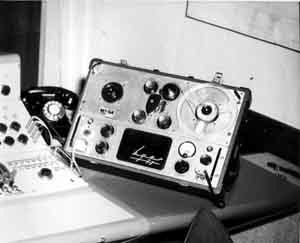
Beyer 77 Mono Reel to Reel ¼” Tape Machine
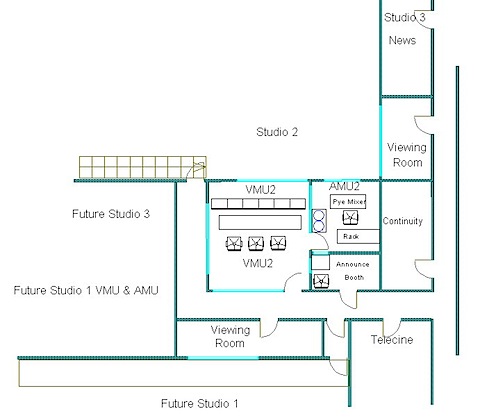
Studio 2 VMU & AMU 1960 (as remembered)
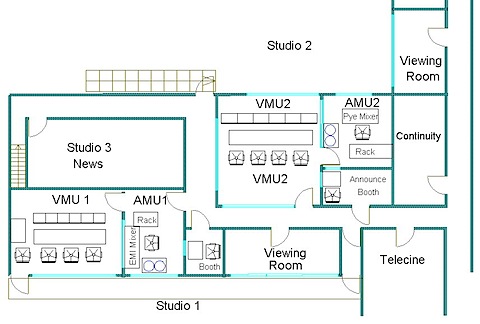
Studio 1, 2 & 3 Control changes approx 1964 (as remembered)
Initially echo for band recordings was done by using tape feedback, but eventually a reverb unit was installed in the rack which was full of springs with senders and pickup sensors at the end of the springs which created a delay. It sounded shocking and produced a very “tinny” sound, so wasn’t used much.
Hum and buzz were always a problem as little was understood in those days about earth loops and how to get rid of them.
There was no multi tracking of recordings due to the lack of equipment, so to get around it a band would lay down a number of instruments or vocals on to ¼ inch mono reel to reel tape and then we played it back and recorded on the other reel to reel with additional vocals or instruments from the studio added to it. Two passes would be about the best we could do because of the added tape “hiss”.
No such thing as an instrument “DI” (not invented then), so to get around that we would attach wires directly to the speakers of a musicians amplifier and plug into the mixer. This would give a clean sound without spill from other instruments. It was some time before we worked out how to do this.
Turn tables were used to play music for news stories as initially they had no sound on film…this was off 78 RPM records. Commercials were often played direct to air off a 45 RPM record if there wasn’t time to dub to a reel to reel tape.
To put a commercial or promo record to air, the turntable was turned on and switched to the appropriate speed (when remembered) and the record slipped (held from turning) with one hand until required to be let go and played whilst opening up a fader with the other hand. At times the 45 RPM record was warped and would jump a groove or two during this activity which resulted in one of many fault reports going to Brian Treasure.
To shorten a piece of music with a natural end for example to 30 seconds on an LP running at 33 1/3 RPM, you would put the stylus on the end of music groove and revolve the turntable backwards counting 17 turns plus a bit to allow for speed pick up so the music wouldn’t “wow” in as the turntable was started and fader opened.
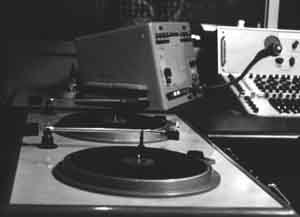
AMU 1 Turntables
I remember a time when I dropped a stack of 78 RPM records just prior to going to air with the news. I had two stacks of records, one for each turntable and they were in order of the news stories. No sound on film, just a voice over from the news reader or booth announcer and music off 78 RPM records.
There were various genres such as funeral marches, bouncy music etc. Well they all got mixed up and some were broken, so you could imagine the turmoil a matter of seconds to air with little time to sort them, with a result in bouncy music relating to a funeral and somber music where it shouldn’t be, being put to air…another fault report to Brian Treasure.
Commercials were sometimes put to air with live talent from the studio floor. I would run down to the studio floor and set up the talent with mics whilst a film was going to air hoping I had enough time to get back between commercial breaks (as they were mostly live from Audio). Sometimes I would get back in time and sometimes not, as the scheduled time was not always accurate…another fault report to Brian Treasure.
Down stairs in Master Control there was always Frank Deusien keeping a watchful eye on me…“sorry Vic…will have to put the fault in the book for Mr. Treasure”…so you can see I could never get away with anything.
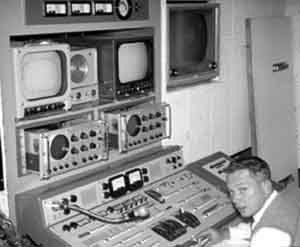
Frank Deusien in Master Control – Photo courtesy Ken McKay
There was a time after setting up a mic on the studio floor talent and I had returned to the control room, when he decided to go to the toilet without advising the control room, so he took the mic off and forgot to put it back on when he returned, which resulted in no clear audio going to air …he was way “off mike” and couldn’t be heard properly…another fault report to Brian Treasure.
At times an extra ¼ inch reel to reel tape commercial would be brought in at the last minute to go in the same break as two other tapes (one off each machine already cued up) and this would mean once the 2nd tape was playing after the 1st one finished, the 1st tape would have to be spooled off and the extra loaded and cued up in maybe 10 or 20 seconds. There may be a delay with no sound going to air (“dead air”) while cueing the tape, thus a fault report would have to be filled in and sent to Brian Treasure.
Endless loop Cart Machines were around in the early 60’s, but TVW didn’t have them for many years, so commercials and promos were put to air off reel to reel, turntable and live from the announce booth resulting in much “dead air” and pissed off clients demanding free re-airing of their spot.
On one occasion on my shift the booth announcer person fell asleep and missed a live on air commercial read… it seemed like I was for ever at Brian Treasures office explaining things, generally after sitting outside his door for anything up to half an hour ‘sweating it out” after being summons to his office.
Editing of music was done by physically cutting the ¼” reel to reel tape taking a piece out and re joining it. The Nutcracker Suite Production audio was all edited this way and I remember the mess we got into with tape all over the floor when one short piece of music that was cut out that was supposed to be moved to another position went missing. We eventually found it but on inserting it into the main reel and the rush to finish, I had inserted it running backwards and wasn’t picked up until rehearsals. To me violins sound much the same being played either way.
Studio 1 AMU was later built in around 1964 with some improvements, but the control room acoustics were very bad. There were too many hard surfaces within the room, such as metal air conditioning ducting, equipment racks, hard walls and floors and lots of glass “coloring” the speaker sound.
Many hard surfaces were parallel to each other causing all sorts of “flutter” echo’s …it was a case I found myself listening to the room and not the talent.
Everything sounded like it had far too much reverb on it. The best the engineers did to improve the room acoustics was to place egg cartons on the back wall behind the operator which did very little to fix the problem.
It also didn’t help having the loud speaker so high above the operator…you will notice you can’t even see it in the photo below. “but it’s good quality…it’s a Warfedale” I was told. “So what !!! …it’s too far away in a room with such live ambience” I explained. I was too young with very little experience to get through to the right people. The Engineers were just not Operator savy. (sorry guys)
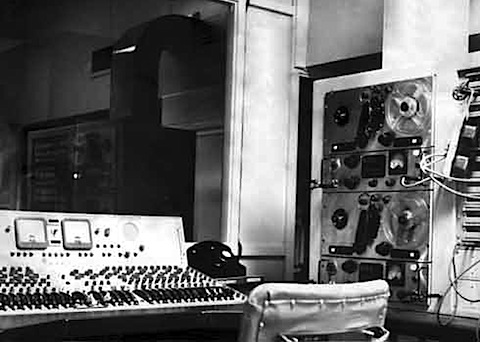
AMU1 Control
The desk was a 24 channel EMI mixer, not much better than the PYE in AMU2, but at least the reel to reels were in a good position.
The main passage to the VMU 1 was through AMU 1, so we had to put up with a lot of noise as people passed through these areas. There were always lots of tours.
What we did finish up getting in AMU 1 that was good was an EMT reverb plate. The physical size was huge…about 4 ft x 8 ft and weighed approx 700 lb It was mounted on the mezzanine floor next to the existing viewing room in Studio 1 with a remote control back to AMU1.
During the ’60s and ’70s, most reverb used on famous recordings through out the world was generated using an EMT reverb plate. The sound quality of a plate is incredibly smooth and very dense.
Invented in 1957 by EMT of Germany, the plate reverb consists of a thin metal plate suspended in a (supposed) sound proofed enclosure. A transducer similar to the voice-coil of a cone loudspeaker is mounted on the plate to cause it to vibrate. Multiple reflections from the edges of the plate are picked up by microphone-like transducers.
Reverb time is varied by a damping pad operated by a small electric motor which can be pressed against the plate thus absorbing its energy more quickly….but you couldn’t change the reverb time once in recording or on air mode as the pick up sensor would pick up the motor noise. The time decay ranged from 0 seconds to over 5 seconds long.
It was dismantled around 1987 and replaced by a small digital unit and reverb never sounded as good again.
The photo below is not the actual EMT plate unit…just for example only.
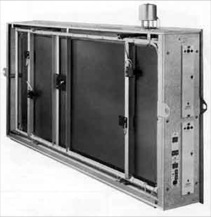
EMT Reverb Plate
Our microphones may have been good quality for their day (and expensive) but in many cases wrong for the job or just looked bad on camera.
A “neck microphone” (BK6) as it was commonly called, was the predecessor to the current lavalier mic. They were big and bulky…not a good look. Check the photo below.
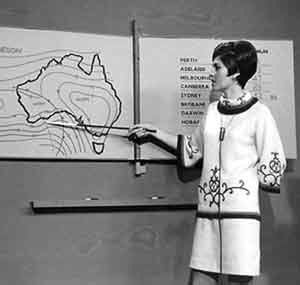
BK6 “neck microphone” on Trina Brown – still being used in 1968 (and later) Photo courtesy Bob Finkle collection
At least with the men, they were in most cases able to hide the microphone under their tie.
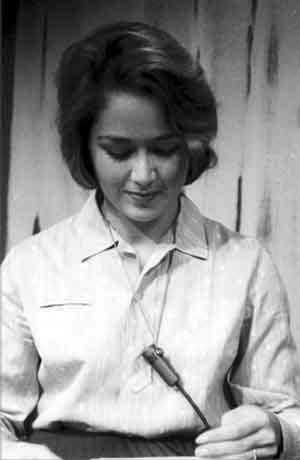
Carolyn Noble with BK6 Neck Mic
We had a boom with a BK5 on it which is a close working cardioid mic and should be used no further than 18 inches from the talent but was used 6 to 10 feet away. It caused all sorts of bad audio.
There would be a band playing live and the singer working on the boom mic which was probably 6ft away at the best, with the audio sounding very bad and hollow because of the spill from the band and we would be battling to hear the vocalist with any sort of clarity, when a direction would come through from the Director “lift the boom for wide shot” …well the audio would suffer even more, with comments “they can get good sound in the east using a boom”…like yeah…right!!!
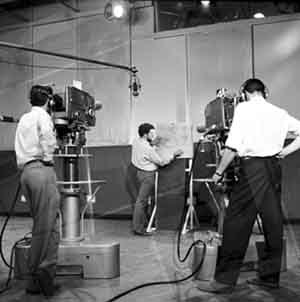
Typical (BK5) Boom position probably picking up a massive amount of room ambience with hollow dialogue.
The Producers and Directors were against using hand mic’s, because they considered it wasn’t good visually. At the end of my first stay leaving in 1966, they were considering using hand mic’s for music and had started using them in the children’s show with great success.
But their way around correcting bad audio for singers with bands was to “mime” which looked awful and was embarrassing to watch and embarrassing for the bands. I was in a band called The Thorts” at the time which had a number of appearances on Club 7 Teen and I hated working this way. I still “cringe” today when I see the replays.
Foldback for artists was initially non existent when singing with their bands; therefore they couldn’t hear themselves over the noise of the band which tended to make them sing out of tune.
In later years when allowed to sing with a hand microphone they would sing through their own instrument amplifiers. This certainly helped.
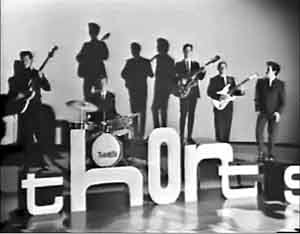
The Thorts (miming) on Club 7 Teen in 1965 – Left to right…Vic Jones – Bass Guitar, Les Watling – Drums, Nigel Van Ross – Rhythm Guitar, Harry Allen – Lead Guitar, Ray Van Ross – Lead Singer (with no hand mic)
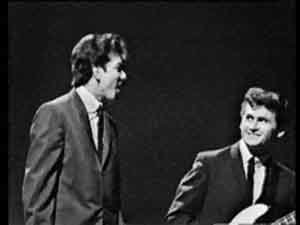
Ray Van Ross & Vic Jones (in trouble)
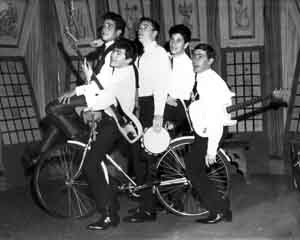
The Thorts (hamming it up) on Club 7 Teen in 1965 – Left to right… Ray Van Ross, Vic Jones, Les Watling, Nigel Van Ross, Harry Allen
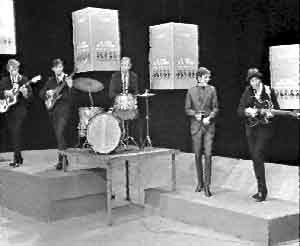
Johnny Young & the Strangers (miming) in Club 7 Teen 1965
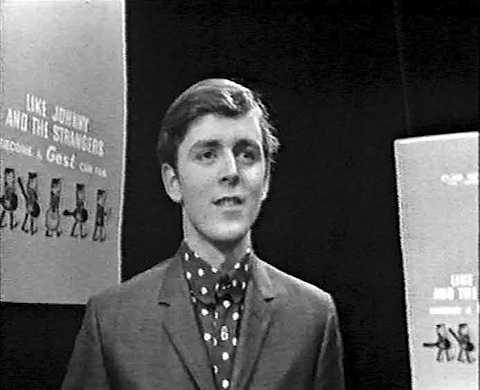
Johnny Young – Club 7 Teen 1965
I left TVW for the first time in 1966 completely frustrated as I felt the Audio Dept just wasn’t moving forward. The new AMU1 to me was just a backward step.
Audio Operators were part of Engineering at TVW back then, which I believe held progression back. In the east they came under Production with their Management having a much better understanding of Production & Operational issues than Engineering.
If there was a problem it was better for Management of Production to ‘fight it out” with Engineering Management over an issue than an Operator. This had all changed when I returned in 1983 and Audio was then part of Production (were they belong).
I also had to make a decision whether to work full time in Television or pursue a band career. With the overall excessive hours I was working between both I found it hard to do justice equally, so made the decision stay in Television and went east to gain more operational experience.(never played a guitar since).
I worked for awhile for Channel 2 and later Channel 10 where they were working with cheap hand mic’s getting a great sound but by using EQ and also using shot gun mic’s on their booms which TVW didn’t have.
Very little “miming” was ever done in the east. Audio for commercials and promos were coming off endless loop cart machines (which had been around for at least 6 years), with auto triggering from film and they had only been on air less than a year.
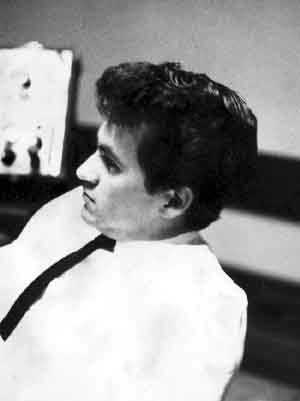
Vic Jones final shift AMU2 1966
I lost track of the happenings at TVW for awhile after leaving in 1966 and it was some time before things started to move forward in the Audio Department.
Here are photos of Dianne Chappell in the late 60’s and Tim Thunder in the early 70’s still doing it tough on the old PYE mixer in AMU2.
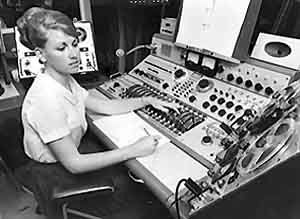
Dianne Chappell – approx 1967 – Photo courtesy Dianne & Barry Hodge
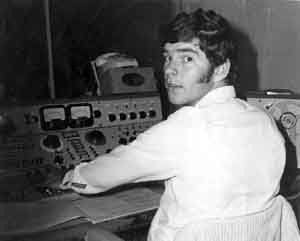
Tim Thunder early 70’s Photo courtesy Paul Huxham
I returned again in 1983 after massive changes and improvements had been made mostly since 1979, especially in the areas of Engineering and Production.
The new layout of the Studio 1 & 2 control rooms rebuilt in 1979 are the best I have experienced in all my travels over the years. Walls and glass all angled to each other with virtually no flutter echo’s or room standing sound waves. You could truly hear what you were mixing. I’ve not found any station in Australia or overseas to have anywhere near a better studio and control room layout.
The photo below shows AMU1 before being “mothballed”. I haven’t any photos of the original AMU1 mixer. It was a PKE custom analogue mixer and was replaced with a Soundcraft TV24 around 1989.
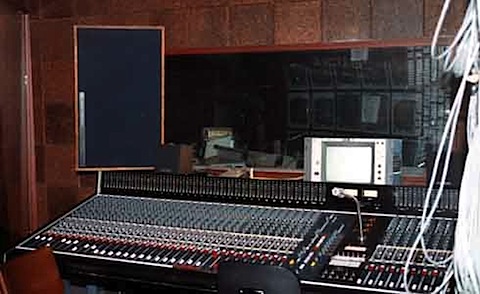
AMU1 looking into VMU1 (about 1994)
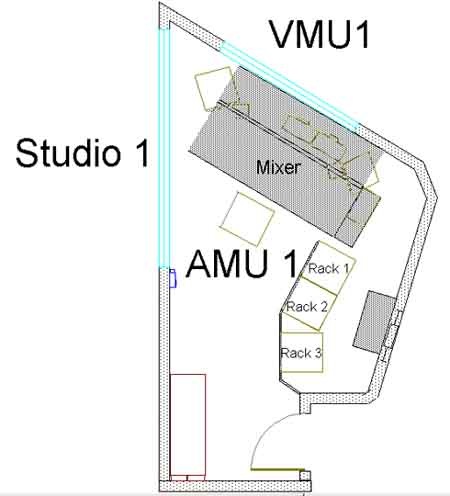
AMU1 layout (walls, glass and equipment rack mostly angled to each other)
It had been a long battle for Production to get where they got to after such a slow start during those early years before being closed down, but I considered TVW facilities had got to the point of being the best in the country.
It’s a pity TVW are not doing any serious productions anymore. Kevin Campbell and John Crilly did a great job in keeping the station in production as long as they did.
Over those recent years of production, in many ways TVW had been a “yard stick” for the way things should be done by the stations in the east.
We in Perth never had the budgets for production that the eastern states stations had, so on many occasions we had to “improvise” and work harder at achieving an outcome with many times achieving better results due to the old “lateral thinking” way of doing things.
Talking of “lateral thinking”, I remember the America’s Cup where Tim Thunder and I nearly lost our jobs.
We were enhancing or “sweetening” the audio on the final of the yacht races live to air with techniques management couldn’t believe we were using.
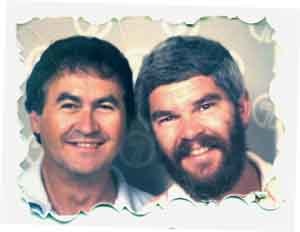
“VICTIM” America’s Cup. 1987
During the “Round Robin Series” preliminary races, we were allowed to have radio microphones on the yachts, but not allowed to be used during the finals in case strategies were picked up by opposition yacht crews.
We recorded those effects during the preliminary races and transferred the sound effects on to six endless loop cartridge machines (no digital machines or computers for us back then) and played them back during the finals.
Each machine would have its own dedicated effects…“boat bow wash”, “sails flogging”, “winch grinding”, “people yelling”, “boat creaks and groans”, etc.
Between Tim and I we would play these FX back into the live coverage with uncanny sync. It sounded so “live” to the point Channel 9 complained to our management that we were using “live” FX audio.
Management came down on us like a ton of bricks and we were told not to use “live” FX. We argued that they weren’t “live”, but we couldn’t convince management at the time.
Tim and I looked at each other and decided that as we weren’t doing anything wrong and we weren’t going to spoil a good coverage with no FX, we would continue on with our “enhancement”.
Shortly later there was another knock on the back of the OB Van and we were told “keep that up and you would both be out of a job”. Once again we stated we were not using “live” FX and come into the van and watch.
With some in trepidation management came into the van and watched for awhile and couldn’t believe what was seen and heard. A perfect syncing of the FX to the yacht race, with no “live” FX being used, which was thus communicated to Channel 9. It was far too late for them to do the same, so we had a big scoop on them with our FX.
The enhancement of audio hasn’t always gone our way. In the early days of enhancing golf, Paul Huxham wrote a computer program (the wizard that he is) where he could play down effects using his computer keyboard. It worked a treat adding FX where there were no mic’s (damn rabbits) such as golf club hitting ball, ball falling into hole (gurgle gurgle) …it sounded brilliant.
But the problem was that due to a slight delay in triggering an effect he would have to hit the keyboard slightly early to allow for the delayed start. This worked OK until one ball decided to go around and around the hole as if it were to fall in, so Paul in anticipation triggered the FX of the ball falling into the hole to find the ball had decided to continue across the green.
John Crilly was producing at the time… took one look at Paul and the effect was never used again.
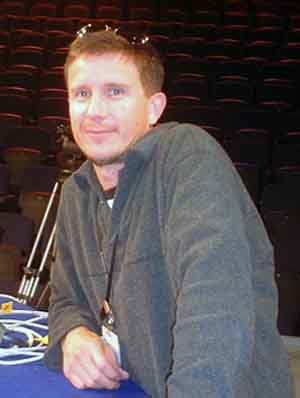
Paul Huxham with that “guilty” look (oops)
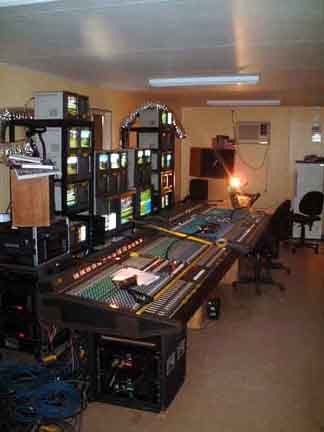
Paul Huxham’s Johnny Walker Golf FX Hut 2003
With Audio it was always a case of having “plan B” in case of a disaster. I remember one disaster when I was involved with the car racing OB’s at Wanneroo.
Each year we would spend a number of days running approx. 5 kilometers of cables through out the bush, mainly in the infield for stereo FX microphones.
The Kangaroos and Rabbits were always a problem eating through or partly through the cables and we would arrive early on the Saturday mornings in the dark ready to hook up to the OB Van with no time to spare as the 1st race was around 9am, to find some microphones not working due to cables being chewed. We always managed to fix things before the race, but what if we couldn’t?
I got the idea one year if I record the race on reel to reel and have it as a backup, I could always use it to play and fill in any microphones that may not be working whilst repairs were being carried out. Eventually a major disaster did happen where I had to use “plan B”.
A lot of the public would camp on site overnight and in a group stupor the Friday night before the start of racing they tied all of the cables to the back of a car where the cables came to one point and crossed the track and took off down the main straight dragging all of our cables out of the bush. The Producer was in a panic and considered the race coverage over before it started.
I said I would have it sorted out before the race started and not to worry. His words “impossible!”…then came plan B.
Whilst the crew was out relaying cables, we went to air with my stereo FX from a previous year filling in areas of missing microphone FX and it synced almost perfectly. The Producer thought we had fixed the cables…”well done…how did you fix those cables so quickly?” was his remark “just a hard working crew” I told him at the time.
I didn’t let on until later at the barbeque what I had done and he just couldn’t believe the perfect sync of FX. But when you think about the speed of the cars there isn’t much difference in times from one year to another (start to finish of race) and the camera switching is almost the same, so we got away with some stereo FX of a previous year.
So the moral of the story in audio is to always have “plan B”
Below are a number of photos I’ve managed to find and ad to the collection.
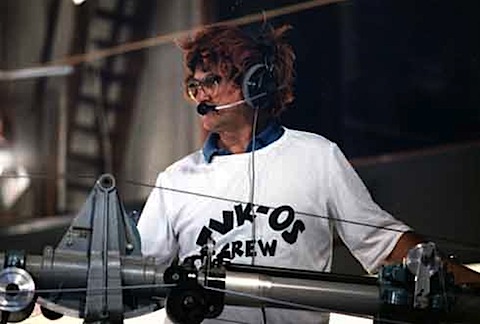
TVK-OS show pilot – Vic Jones (in costume) “a real boom swinger”
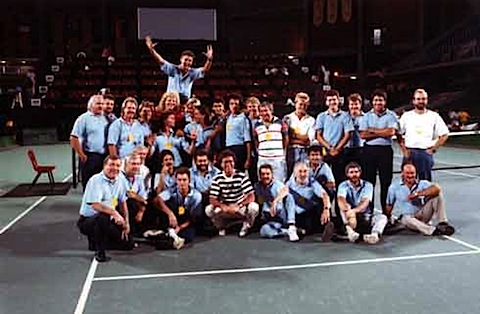
Hopman Cup Crew with Cliff Richard (about 1989)
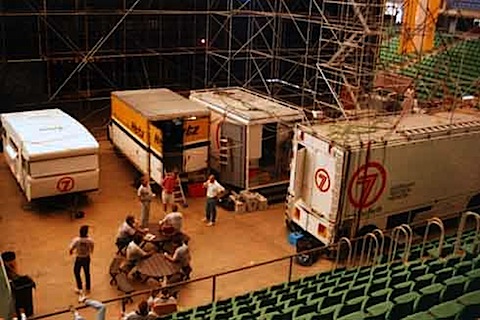
Hopman Cup Crew & Vans – inside Burswood Dome
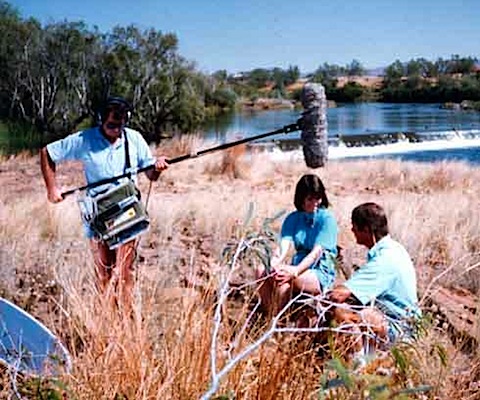
Kununurra – “Sing me a Rainbow” Vic & Marianne with Guest
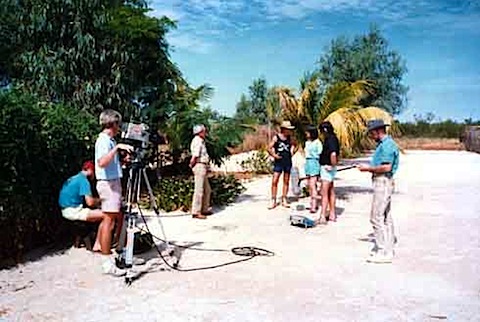
Broome – “Sing me a Rainbow”
Steve Gilks, Gary O’Keefe, Gerard Swift, Guest, Marianne, Vic Jones, Trevor
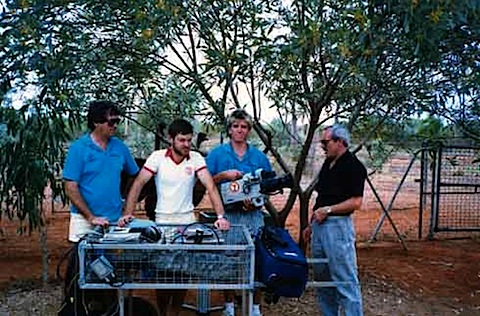
Broome – “Sing me a Rainbow”
Vic Jones, Steve Gilks, Garry O’Keefe, Gerard Swift
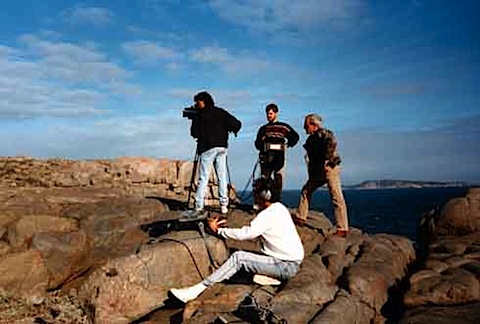
Albany – “Sing me a Rainbow”
Brad Bergersen, Vic Jones, Steve Gilks, Gerard Swift
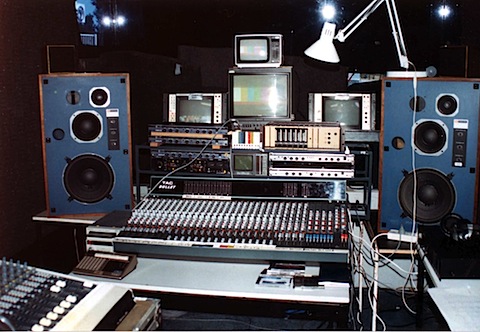
Telethon 1991 band mix facilities
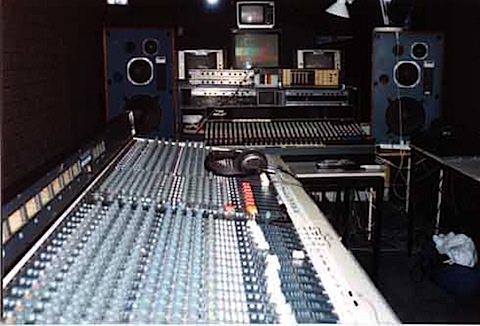
Telethon 1991 band mix facilities
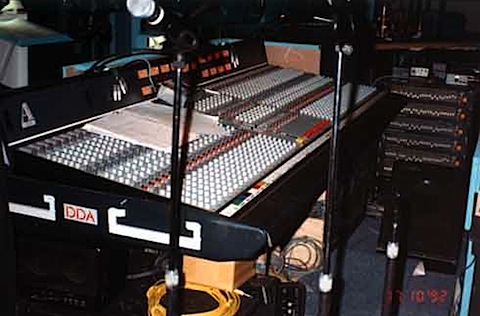
Telethon 1992 studio foldback – a “Foss” domain
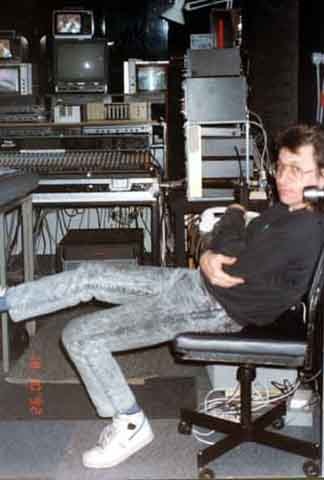
Telethon 1992 band mix facilities – assistant Norbert Roth (deceased) – a brilliant assistant…sadly missed.
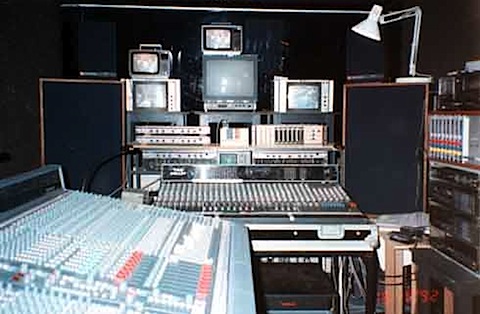
1992 Telethon band mix facilities
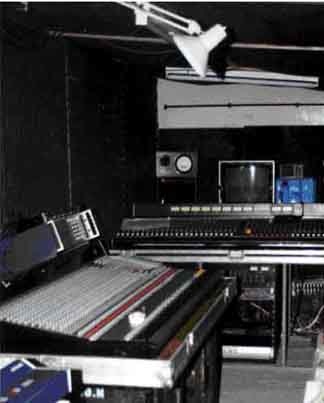
Leeuwin – Diana Ross Concert 1992 TV band mix facilities
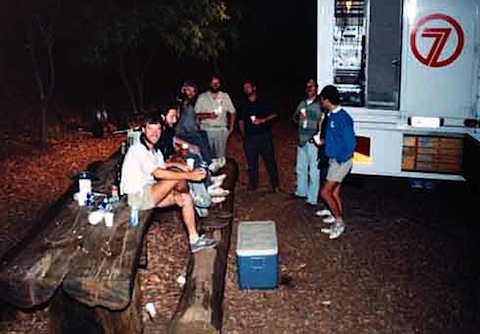
Leeuwin – Diana Ross Concert 1992 OB Crew
Steve Gilks, Keith Martin, Bill Sadden (obscured) , John Katavatis,(obscured) Tim Thunder, John Maker, Tim O’Dea, Les Hounsell, Frank Gradisen
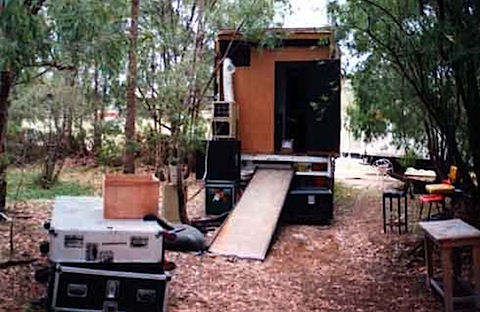
Leeuwin – Diana Ross Concert 1992 OB Van Band Mix
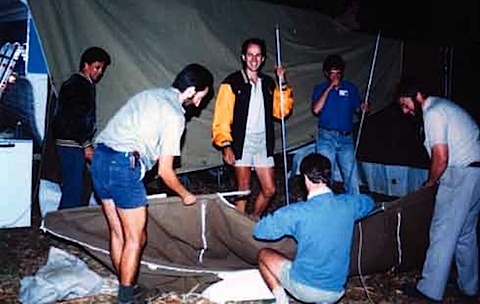
Leeuwin Concert 1992 – Billy Snadden, Keith Martin, Frank Gradisen, Steve Gilks, John Katavatis, John Maker – setting up accommodation
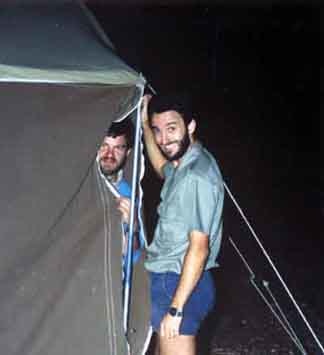
Leeuwin – Diana Ross Concert 1992 -Steve Gilks, Keith Martin
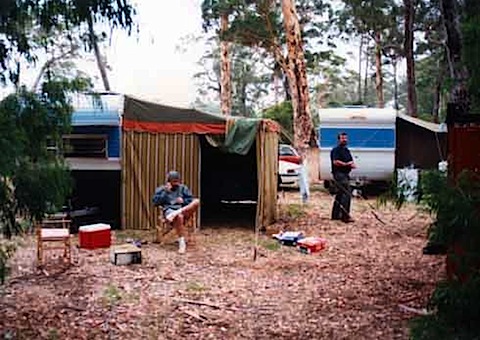
Leeuwin – Diana Ross Concert 1992 – Tim Thunder, Tim O’Dea
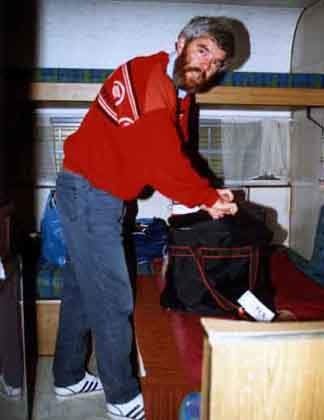
Leeuwin Concert 1992-Tim Thunder
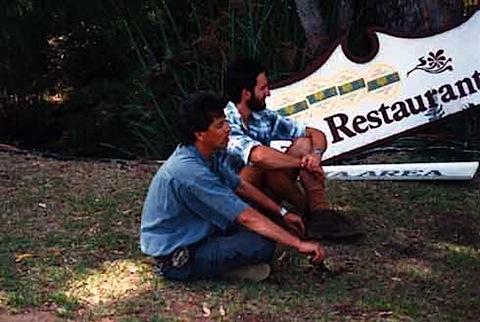
Leeuwin – Diana Ross Concert 1992 – Billy Snadden, Keith Martin
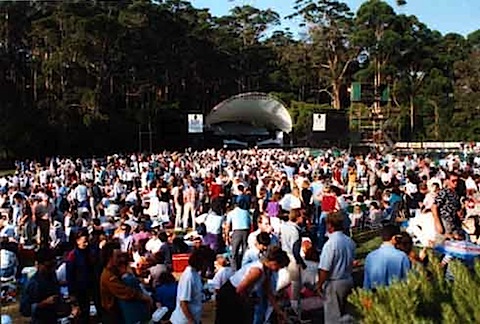
Leeuwin – Diana Ross Concert 1992
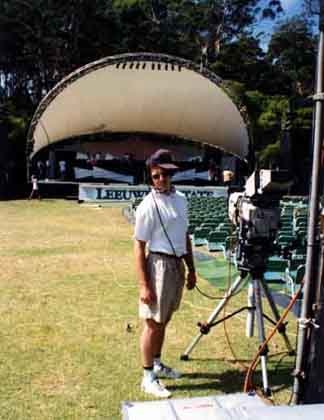
Leeuwin – Diana Ross Concert 1992 – Shane Street
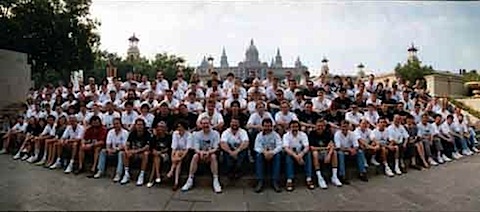
Barcelona 1992 – Seven Network crew shot
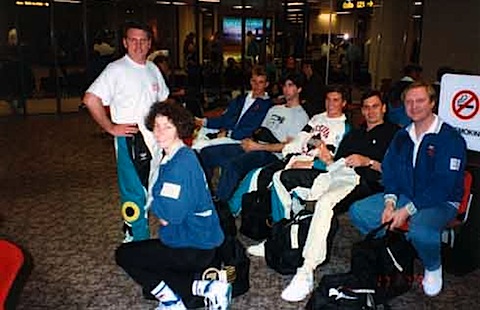
Barcelona 1992 – Marshall Taylor, Jennie Gaunt, Steve Pecnik, Chris Hetherington, Gary O’Keefe, Shane Street, Steve Quartly
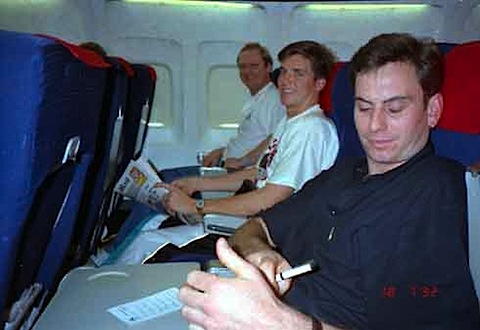
Barcelona 1992 – Steve Quartly, Garry O’Keefe, Shane Street
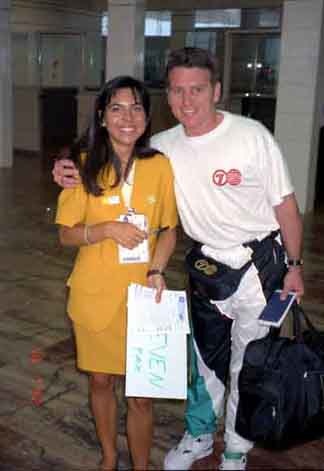
Barcelona 1992 – Marshall Taylor & Spanish guide
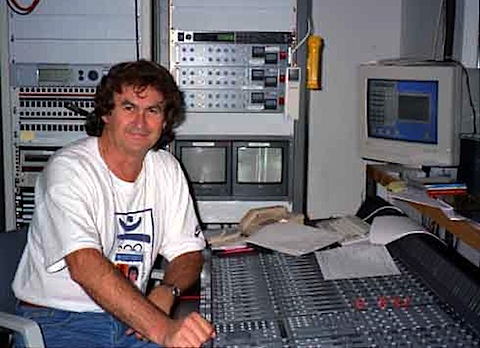
Barcelona 1992 – Vic Jones, Audio Director
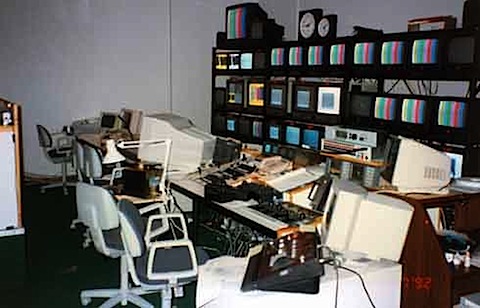
Barcelona 1992 – VMU
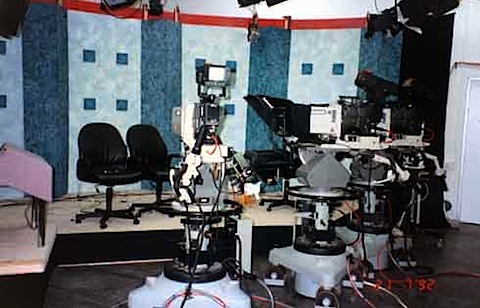
Barcelona 1992 – robotic cameras (who needs cameramen)
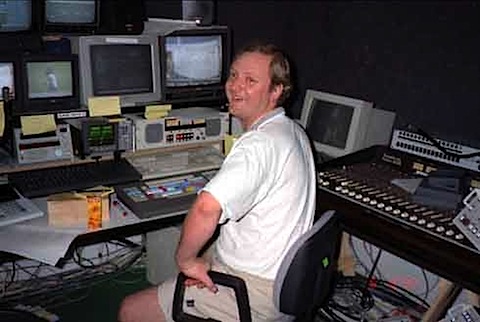
Barcelona 1992 – Steve Quartly, Tape Editor
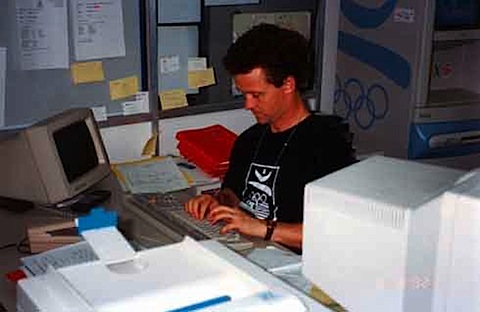
Barcelona 1992 – Chris Young, Research
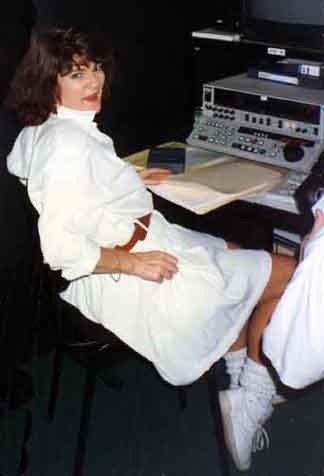
Barcelona 1992 – Karen Letica, Producer
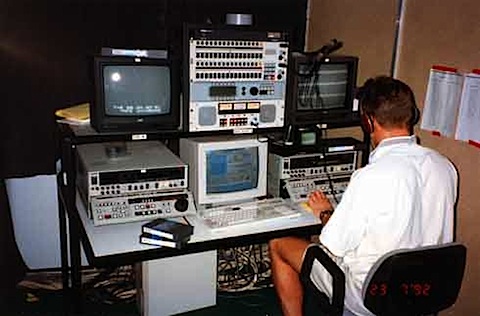
Barcelona 1992 – Steve Pecnik, Tape Editor
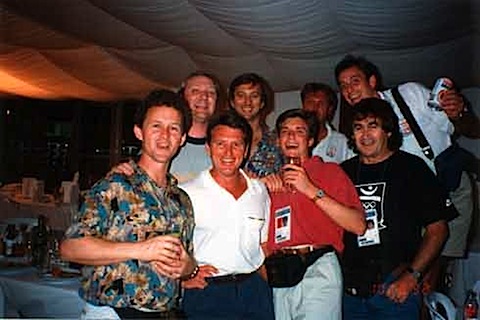
Barcelona 1992 – Chris Young, Steve Quartly, Marshall Taylor, Dennis Commetti, Gary O’Keefe, Neil Brooks, Shane Street, Vic Jones
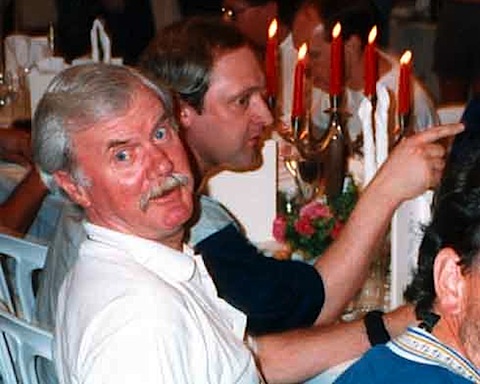
Barcelona 1992 – John Crilly & Steve Quartly
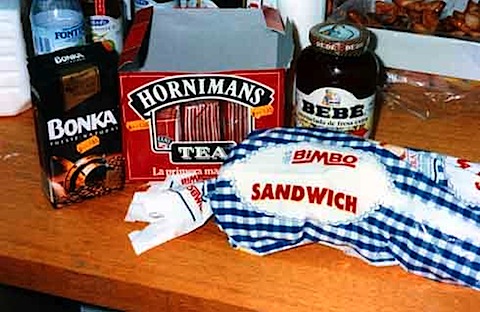
Barcelona 1992 – “now that’s real food”
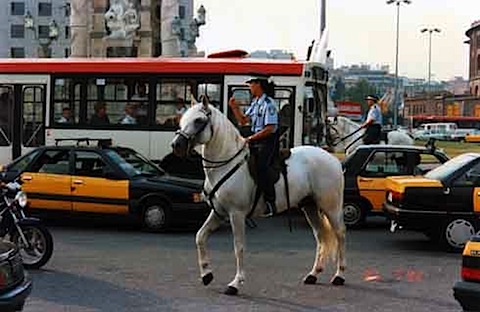
Barcelona 1992 – Traffic Chaos
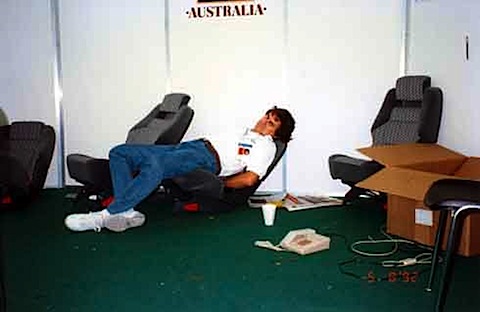
Barcelona 1992 – Vic Jones “just give me five”
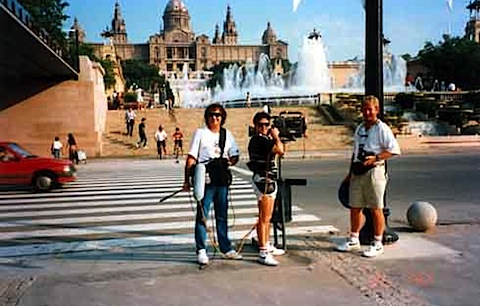
Barcelona 1992 – Vic Jones, Stephen Scobie, Glenn Steer
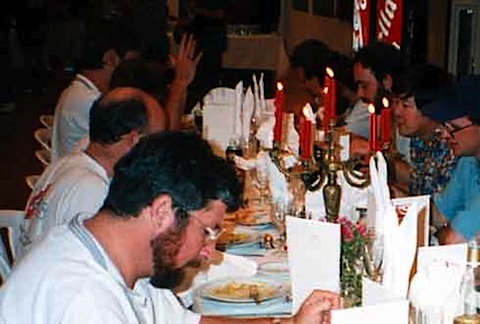
Barcelona 1992 – John Maker (just can’t decide)
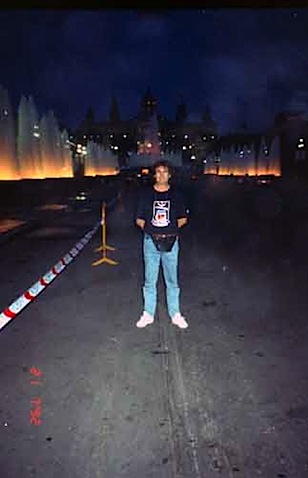
Barcelona 1992 Vic Jones
“sounds good to me”
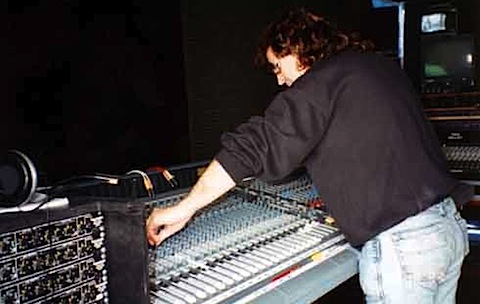
Telethon Band Mix 1993 – Vic Jones “damn kick drum”
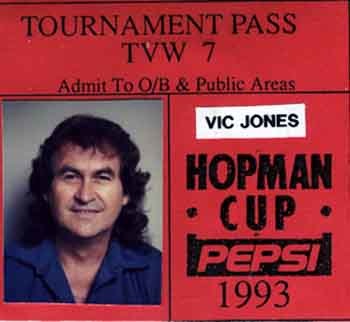
1993 – “the old geezer” as was affectionally called
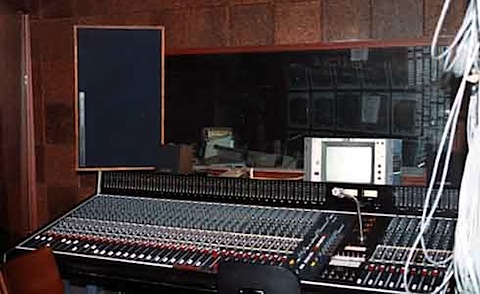
AMU 1 1994
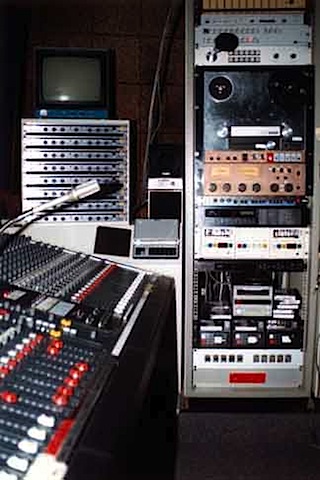
AMU1 “outboard gear” 1994
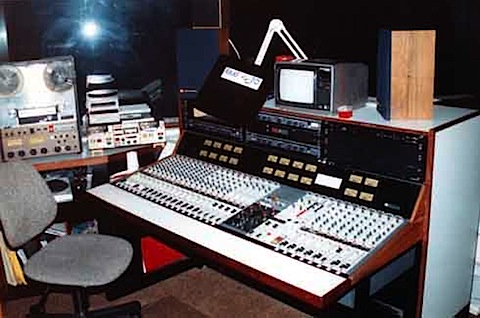
AMU3 1994
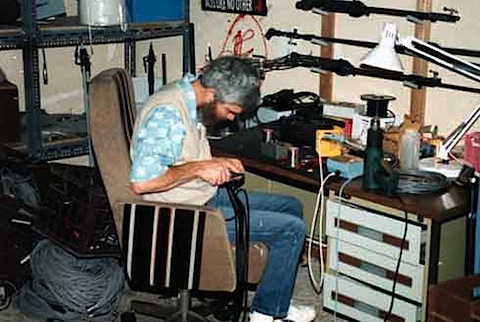
VMU-AMU3 – 1994
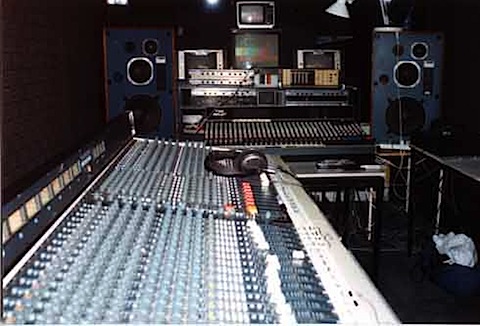
Telethon 1994 band mix facilities
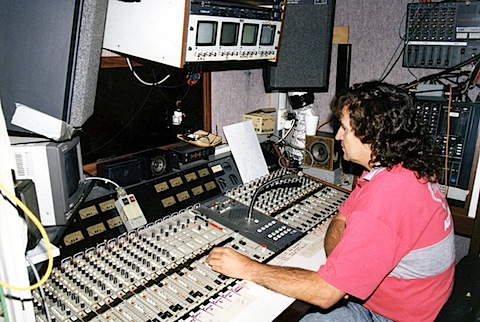
Hopman Cup 1994 – Vic Jones in OB Van (photo courtesy Paul Huxham)
Harrison Mixer
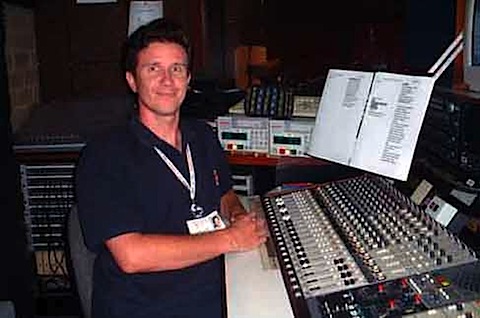
Studio 3 News 2004 (photo courtesy Paul Huxham)
Paul Huxham
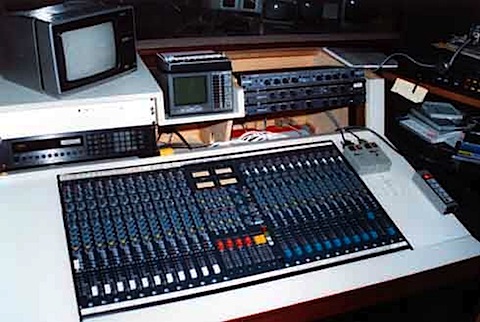
AMU 2 1995
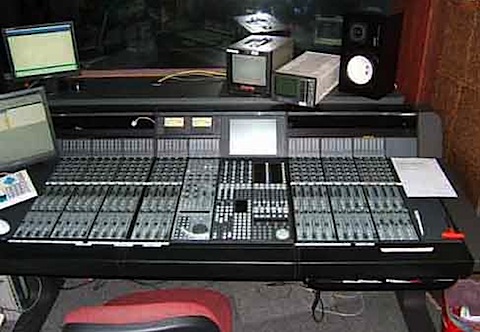
AMU 2 – Euphonix 1995 (Soundcraft replacement)
(photo courtesy Paul Huxham)
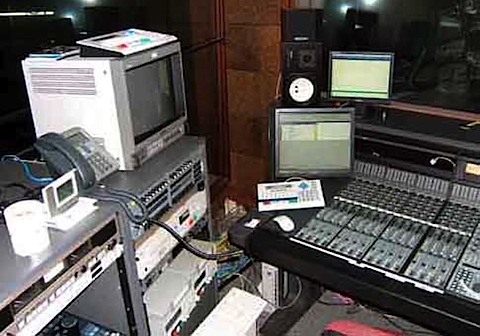
AMU 2 – Euphonix & Outboard 1995 (Soundcraft replacement)
(photo courtesy Paul Huxham)
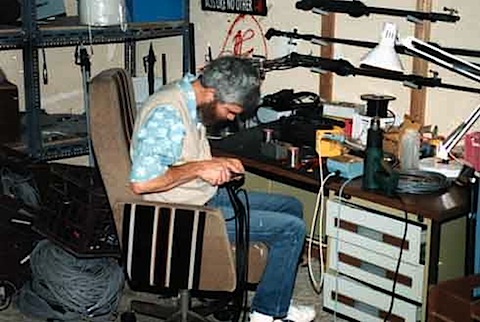
Tim Thunder “Mr Fix” (photo courtesy Paul Huxham)
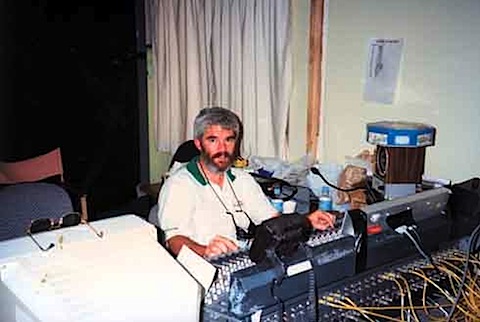
Vines Heinekin Golf 1995 (photo courtesy Paul Huxham)
Tim Thunder
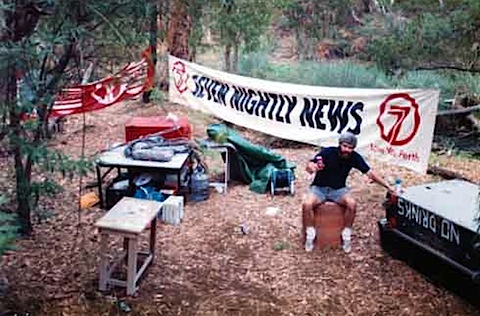
Bush Patrol 1996
Tim Thunder
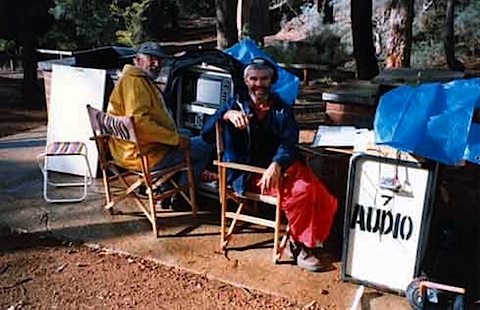
Bush Patrol 1996
Tom Creamer, Tim Thunder
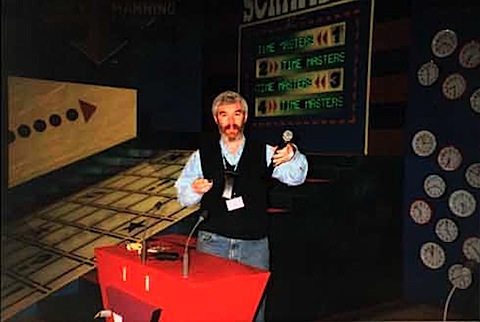
Time Masters 1997 (photo courtesy Paul Huxham)
Tim Thunder
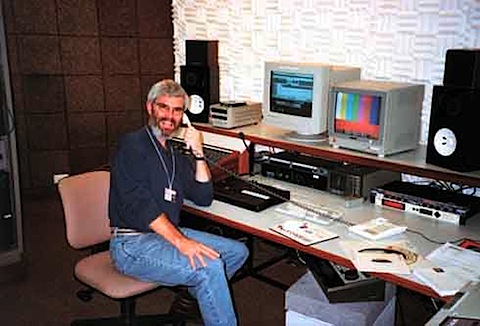
Post Production 1997 (photo courtesy Paul Huxham)
Tim Thunder
Tim would be the most respected man in Audio and much loved everywhere he went. Nothing was ever too much trouble…knew his stuff and just loved people.
Just a great guy to work with …he is sadly missed by all of those who knew him
Rest in peace Tim (mate)…you will never be forgotten.
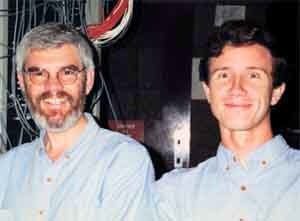
Tim & Paul
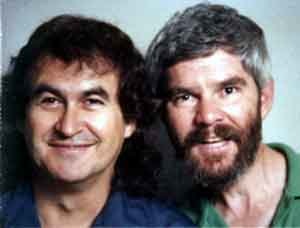
Vic & Tim
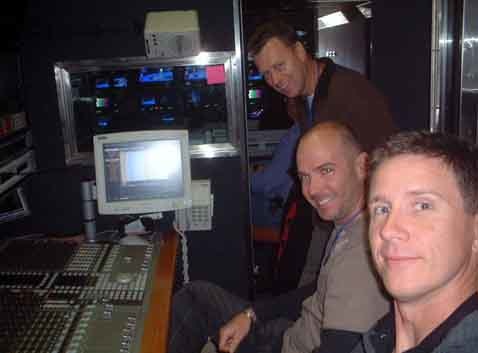
Telethon 2005 (photo courtesy Paul Huxham)
Phil Youd, Glyn Jones, Paul Huxham
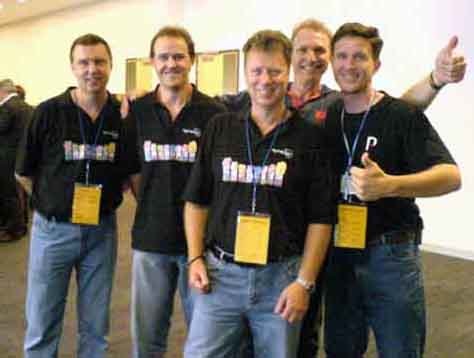
Telethon, 22nd October 2006 (photo courtesy Paul Huxham)
Phil Lentz, Richard Glover, Phil Youd, Graham Chadwick, Paul Huxham








Is there any footage from Johnny Youngs – Club 7 Teen? I hear all of it is destroyed bar a few clips of Johnny.
Fantastic! A great look at audio history Vic. I never went to the studios here, I was based at the Ent. Centre for about 20 years. In Sydney, when JJJ first started up, they used to have bands in the studio for a ‘live to air’ show. So we’d bring the PA and lights in, the stage gear etc, the ABC guys would set up their own mics on the kit etc, and use their own snakes rather than the bands (usually a wise choice back then). Bands like Blackfeather etc would rock the studios with an audience seated on the carpeted floor, a good vibe back then.
TV audio always held my interest, and I have a lot of respect for guys like Carl Aker and Whitey, but I’ve always been a live music person. I’m 62, so I guess we’re around the same vintage. It’s been a good read, and good pics of the early gear.
Cheers,
Paul Close
Loved the text and pictures! Brought back many memories of my early days in televison audio on the east coast – especially the pic of John Crilly, who used to direct at GTV9 while I was there. Who would have thought we would have come all the way from 78rpm news TTs to de-breathing commercials using a chinagraph and razor blade to editing tracks on a laptop at home?
Cheers,
PeterE.
Hi all…I work here in the states as the host of Early Backstage for CBS’s The Early Show. I’ve been looking to see some episodes of A*Mazing and Time Masters for quite some time, and by the looks of it, it seems you have worked on those shows.
Is there someone out there who has episodes of these shows that they might be willing to send here to New York? I’d be glad to pay for shipping, labor, etc.
Thanks,
Adam M. Wurtzel
Early Backstage
“The Early Show”
Ken and others, Found this Club 17 clip of The Thorts perrforming The Easybeats For My Woman if you wish to include in the article.
http://www.youtube.com/watch?v=Kia0wB1sCTQ
What a fantastic testament to the old days at TVW. It’s good to hear you are still at it as am I. I was a TD at TVW from the start of the ’80s until the end when Viz Ad was abolished and I went to the UK. I am currently working for MTV Europe which is great fun. It saddens me greatly to hear that Tim Thunder is no longer with us because as you say he was a great human being and a great mate.
Very interesting post and I think it would’ve been great if you had imbedded the the youtube video of the Thorts to illustrate your point about having to mime singing.
Great article Vic, real insight to the early days.
Good to see you are still pushing plastic.
Glyn
Hey Vic, It’s Andy Alias here, We used to work together at HVD Malaysia, I’m trying to get in touch with you, so if you are reading this please email me at runningscript@gmail.com
Hope you’re doing great and looking forward to hearing from you.
runningscript.webs.com
Thanks for the wonderful memories Vic, I still treasure my TVW days and your photos and words bring back so much… It was sad to hear about Tim may he rest in peace, but seeing these photos reminds me of how much of a great character he was and how much fun and joy he spread… Regards Jen Edwards (nee Gaunt)
Hey Vic, it’s Annita here. We worked together at HVD Malaysia. How are you doing? I’m visiting Perth this coming September and was hoping that we could meet up. If you are reading this please email me at babyvob@yahoo.com
Looking forward to hear from you.
Take care and goodbye!
Dear vic…
Or someone else that knows phone number. Email or adress…
I want to meet you Vic… i try to find you since 1998…
Somebody help me ..
Iwant to meet GREATEST TEACHER… VIC JONES.
My name IWAN SISWANTO.iwanauduo@gmail.com phone. +62 21 89521460562
Work at tvOne. http://www.tvonenews.tv. jakarta indonesia
I hope you read this Vic…
Or
I hope somebody giving hand helping me
MAY GOD BLESS YOU VIC..
MY WARM N HUG TO RINI.. YOUR LOVELY WIFE
PS;:
I work together with Mr.Vic Jones. When she work at PT. YASAWIRYA TAMA CIPTA ( 1996- …)
Hello Vic Jones, just trying to touch base with some blasts from the past.